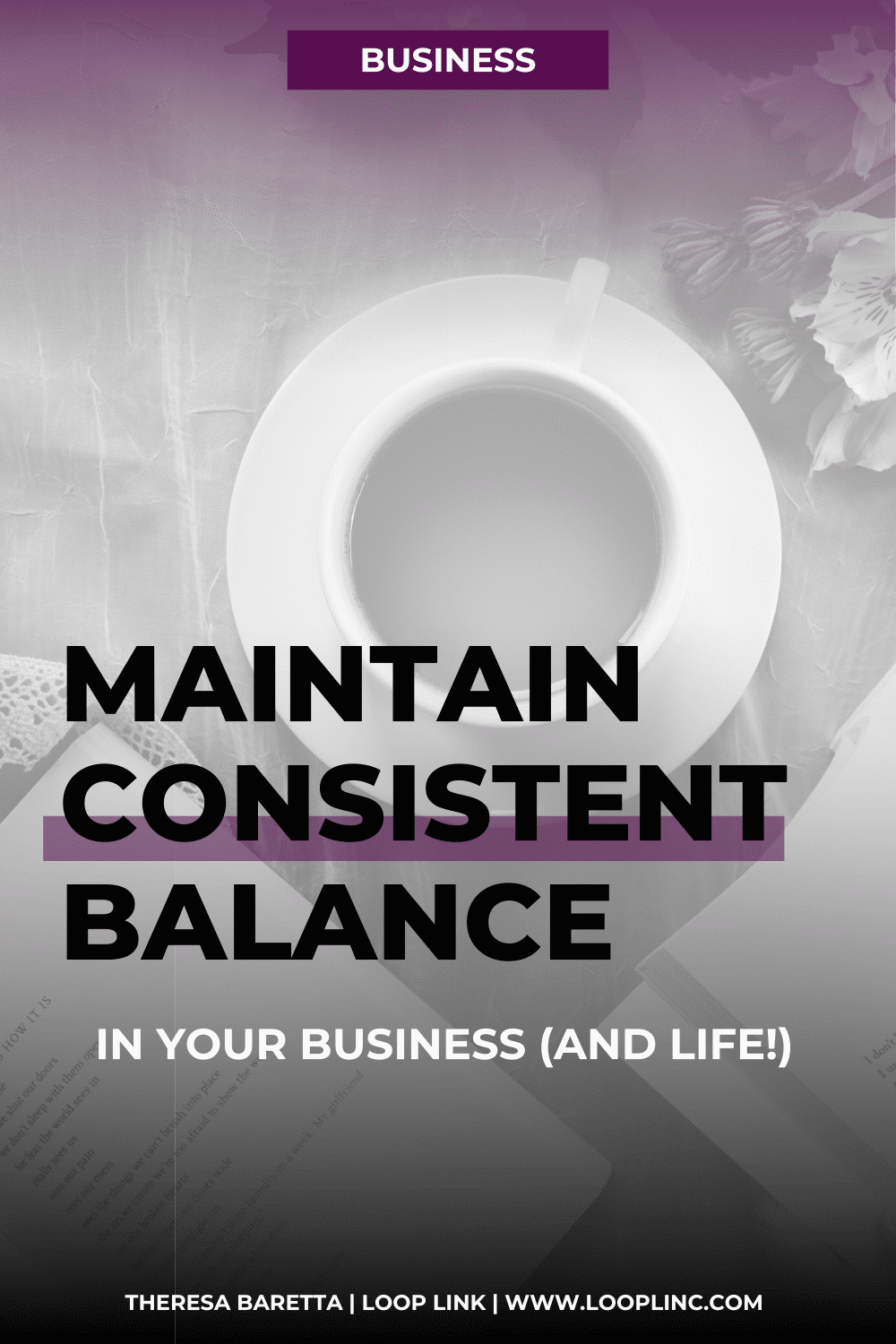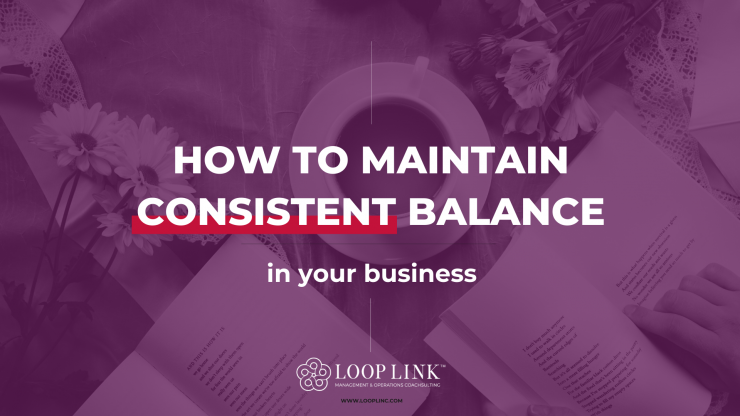Businesses are complex, and often it’s up to you to maintain consistent balance in your business. There are so many hats we have to wear on a daily basis – some more enjoyable than others. There are areas where we shine, but often there are specific areas of our businesses that become neglected, and this can quickly throw off our balance.
Maintaining balance in your business requires you to wear all of your hats with ease. But how can you make sure you’re doing that effectively?

When your business is not in equilibrium, it often means working overtime to try to readjust, which in turn leads to an improper life-work balance. That can quickly become a vicious circle, but it’s one that you can break with a few easy solutions in your workday.
Maintain Consistent Balance in Your Business:
First with your mindset!
I’m a hustler. And a workaholic. #thatsmytruth.
And it’s a hard truth to swallow sometimes, especially when I’m advocating for work-life balance.
When I get into my zone, everything else fades into the background and time gets lost at sea. It’s not a bad thing, considering that means that one would have a strong focus. But we have to balance the different roles and responsibilities that the business needs. For example; rebranding my business has taken up a lot of my time. I spent hours re-imaging my blog posts, and creating images for social media, but would entirely miss the window of opportunity for creating the content.
I would still be lost in my zone if it wasn’t for my ActionDay Planner. I speak a lot about #allthetechstuff, automation and all, but there’s always still a place in my life and workflow for pen and paper. My mind becomes sharp when there’s written initiatives. Checkpoints are mentally and physically created to ensure there’s focus on all the moving pieces of the business, so there are no surprises along the way.
So here are a few methods that will help you along the way to maintain consistent balance in your business.
1. Using proper workflows
I love the term “workflow” because it conveys a smooth, steady movement. That’s precisely what a workflow should feel like (and it feels good!) A workflow is a set of steps that guide and channel your business down a smooth path, and keep you organized. Your workflow will be unique to your business, but no matter what the details look like, if your workflows are efficient, they should help you get to all the different aspects of your business. The important thing is to set yourself up for success by making sure you’re working on the right thing, at the right time.
Another important aspect of a workflow is that it gives you the opportunity to set checkpoints for yourself. Checkpoints keep you on track. If you aren’t able to step out of your workflow at a checkpoint and see where you are in the process, you need to readjust. A workflow should be guided, but flexible; it should help you to easily navigate emergency situations, without having your whole system go off the rails.
2. Take a broader view of your calendar
To ensure you’re on track with the different aspects of your business, you need to be able to measure your milestones and track progress. When you review your calendar, be sure that you aren’t just looking a few days ahead. Instead, expand your view to the full week, or even the entire month to make sure you’re staying ahead of yourself, meeting deadlines, and preparing for your next steps.
You also need to schedule yourself appropriately. Instead of just piling items up in a short time span (i.e., a two-page daily to-do list), schedule them in throughout the month at times that make sense, and in a way that won’t stress you out.
3. Use accountability partners
Business besties are one of the best relationships to cultivate because they keep you on point and motivated. Someone who is or has been on a similar path can provide valuable insights into the best way to do things, and help steer you clear of mistakes and missteps.
Regular feedback from a trusted business buddy will help you maintain oversight, and pinpoint places where you might be coming up short without even realizing it. Honesty is the best policy in these relationships, so nurture a respectful and constructive relationship with someone who isn’t afraid to tell it like it is, and be sure that you’re offering them some perspective in return.
4. Take that break
When you’re caught up in the day-to-day, it can be tough to step back and look at the bigger picture of your business. You become hyperfocused on details, and sometimes it takes removing yourself from that complicated equation to be able to see how everything comes together. Taking breaks is crucial to maintaining your overall balance. That means taking short breaks throughout the day, giving yourself time off throughout the week, and taking a more extended vacation once or twice a year when you need it. If you aren’t giving yourself the right amount of time off, you risk becoming burnt out, which usually leads to neglect in essential areas of your business.
5. Master your processes
Without a set of procedures to follow, you’ll quickly find yourself running from one thing to the next. A considerable task list without prioritization and timelines is not useful in managing the multiple aspects of your business. You should have sets of basic steps to follow for when you receive a new lead, and a new client, start a new project, etc. It’s not only crucial to have these processes in place, but to have them written out so you can refer to them if you’re feeling stuck, and for easy communications when you need to bring in help at the last minute.
The question you need to ask yourself when you’re setting up your processes is this: “Do I need to be in charge of this process?” You need to know when to hand off a stream of work to someone else. Just because you love doing a particular task doesn’t mean it can’t or shouldn’t be delegated to someone else, so you can focus on a less-desirable, but equally important task.
Your Move
These solutions take time to implement, but managing the different aspects of your business means taking time from working in your business, to work on your business. Knowing your processes and checking in on them regularly will help you maintain your sense of balance, and stay on track in your business.
Have you mastered how to maintain consistent balance in your business?
Still struggling to get both feet on the ground?
Come over to our Free Exclusive Community where you can find support from other CEOs on the same journey.





